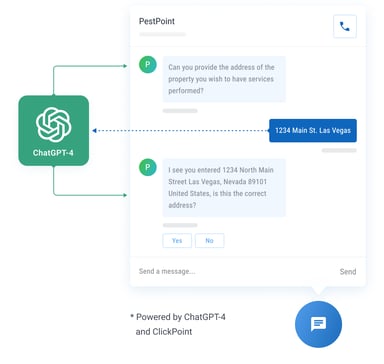Demand Generation vs Lead Generation
Demand generation and lead generation are two components of a more comprehensive inbound sales strategy. Understanding how the two work together helps sales and marketing organizations to build a balanced inbound approach.
What is demand generation?
Demand generation is a top-of-funnel brand marketing strategy.
Demand generation marketing increases brand awareness. It educates potential customers and helps people get to know and trust your company - eventually converting strangers into prospects.
Demand generation campaigns range from brand marketing campaigns to branded content like blogs, social media, or other ungated content marketing. A demand gen strategy aims to build awareness and generate demand for your business.
What is lead generation?
Lead generation processes move brand-aware consumers through the buyer's journey by nurturing interest created through demand generation. Lead generation aims to convert potential customers to leads, move them through qualifying stages, and convert them to customers.
Examples of lead generation content are gated content, webinars, newsletters, and other free offers requiring a sign-up. Lead gen forms should be kept simple, capturing only the most essential contact information such as a name and email address. However, they can also include pre-qualifying information when necessary.
Lead generation also includes intent prospecting with sales tools like G2 and Zoominfo. These solutions provide buyer intent information and pre-qualify leads, based on their desire to purchase a given product or service.
It’s important to remember that lead generation is middle to bottom of the sales funnel. To have an effective lead generation campaign, you need to feed it a large audience from demand generation.

Demand generation attracts and builds your target audience, converting a broad audience into viable prospects. Lead generation qualifies and converts those prospects into leads and customers.
Demand Generation vs. Lead Generation
Demand generation attracts and builds your target audience, converting a broad audience into viable prospects. Lead generation qualifies and converts those prospects into leads and customers.
What’s more important, demand gen or lead gen?
Demand generation marketing and lead generation marketing are stages of a cycle. Every organization should use a combination of the two. However, there are times when a company will need to focus more on one than the other.
As a component of brand marketing, demand generation is critical to creating awareness of your company or product. If you have a strong brand and your target audience is already familiar with you, focus on lead generation. If you are a new company, a start-up, or have low brand awareness, you should lean more toward demand generation.
How do I improve my demand generation?
- Understand Your Buyer
- Create Branded Marketing Content
- Define Your Marketing Channel Strategy
- Focus on Brand Recognition
Understand Your Buyer
A targeted demand generation strategy starts with buyer personas. When you’ve established actionable buyer personas, create a list of their needs and pain points. Demand generation assets should provide solutions to prospects' problems. Promoting those assets to targeted audiences puts your name in front of them, provides value with solutions, and establishes trust.
[link] Learn more about actionable buyer personas. [link]
Once you understand your key personas, target them with relevant branded content.
Create Branded Marketing Content
Branded content marketing, is the foundation of a strong demand generation strategy.
Branded content campaigns attract prospects to your sales funnel. Content marketing is everything from blog posts, to eBooks and case studies to infographics and videos. High-quality content that provides value to a prospect and positively represents your brand is good content marketing.
It's important to understand viral marketing and how to craft contagious content. Contagious content is content that people want to share with others. If your content goes viral, you effectively have an audience that expands itself.
Hiring a content marketing consultant can be helpful, even if it's only short-term. Content marketing can be difficult to implement, but once it's running, it's much easier to manage.
Once you develop strong content, distribute it to relevant marketing channels.
Define Your Marketing Channel Strategy
Determine which distribution channels help drive new audiences for your business. Understanding your buyer personas will help you identify the channels that your most likely potential customers will use.
Social media platforms are a great place to grow demand generation. Social media posts reach a large audience of potential customers. They can range from something as simple as a meme posted to Instagram to a how-to video posted on YouTube.
Focus on Brand Recognition
Brand awareness is the likelihood that consumers recognize your brand, products, or services. Direct marketing professionals look for fast gains and often overlook the importance of recognition. Brand awareness is critical to customer consideration.
If your demand generation efforts fall flat, you probably need more content, better-targeted content, or higher-quality content. If you still aren't attracting customers, you may need to improve your brand identity.
As a brand marketing effort, demand generation takes time to build. You will rarely see short-term returns on demand generation. So if you aren't seeing results from your branded content campaigns, you may need to give them more time.
Demand gen is an investment that takes time to mature. Once matured, it will provide stable lead velocity (growth).

How do I improve my lead generation?
It’s possible to generate leads without a demand generation program. However, long-term growth is nearly impossible, and conversion rates are much lower without a demand gen process in place.
Lead generation should be targeted, relevant, and up-to-date. These lead generation components should be regularly analyzed and updated:
SEO
Search engine optimization should be checked and updated regularly. SEO helps you generate more leads who are looking for products and services like yours online. Strong SEO requires quality content on your pages.
Google determines page value based on keywords, the number of words, and the readability of your copy. The first rule is to make your pages user-friendly and useful to visitors. You should also have relevant keywords and pages that are easy to scan.
Backlinks are how Google knows that others find your content valuable. The more backlinks (links from other sites) that you have, the better your ranking will be.
However - if the links are paid for or on questionable sites, they will hurt your SEO. These bad links are called "toxic" backlinks. To disavow and keep your SEO clean, you can submit toxic backlinks to Google.
You can hire companies like [link] Content Guppy [link] to source good backlinks and improve your backlink profile.
SEM
Search marketing campaigns should be fully optimized and monitored. Google Ad campaigns are constantly evolving, and to be successful, marketers should be aware of updates and adapt.
Google updates such as GA4 and more sophisticated targeting methods with tools like Performance Max will greatly improve your conversion rate.
Google Performance Max is a goal-based campaign type that allows performance marketers to access all ad components from one campaign. It complements keyword search campaigns to target prospects from all of Google's channels, including YouTube, Display, Search, Discover, Gmail, and Maps.
Landing page designs and messaging should also be kept up to date. To capitalize on improved traffic from SEO and SEM, the best conversion content and calls to action should be used.
Offers
Clarify and diversify your value offers for different stages of the buyer cycle. Creating offers that target buyers at their stage of the cycle increases capture in all areas of the sales funnel.
Demand generation, together with lead generation, create a comprehensive inbound sales strategy. Understanding how they work together helps to build a balanced inbound approach.
Demand generation tells prospects who you are, converting a broad audience into viable prospects. Lead generation converts those prospects into qualified leads to pass from the marketing team to the sales team.
Learn more about automated lead distribution software and how it fits into a lead distribution system.




